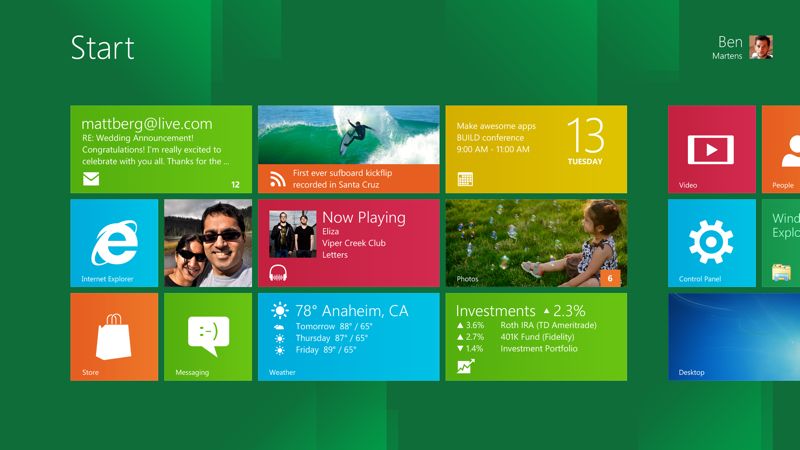Posting from Anaheim: Microsoft today is announcing a new toolkit to help independent software developers connect Windows 8 apps to services from the company’s Windows Azure cloud computing infrastructure — allowing a news app, for example, to easily receive and display a notification on its tile on the Windows 8 Start screen when an important bulletin crosses the wire.

That’s an appropriate example, because one of the sample apps in the Windows 8 preview is a newsreader program engineered by a 22-year Microsoft intern, Varun Mani, a senior at the Olin College of Engineering outside of Boston.
Mani did the same for a Windows 8 weather app, architecting the back-end services for the apps this summer even as the toolkit was still taking shape.
He was part of a group of Microsoft college interns tapped by the company to build a whole catalog of sample apps for release as part of the Windows 8 unveiling here in Anaheim this week. The apps are a centerpiece of the preliminary Windows 8 version being shown as the company lifts the curtain on what it describes as the biggest overhaul to Windows in more than 15 years.

Not exactly a low-pressure internship. But Mani says he thought about it not in terms of the pressure but in terms of the opportunity to learn something new and do something with major impact, given the scale of Windows and the importance the company is placing on dynamic new Windows 8 apps.
Larger tiles are replacing static icons on the Windows desktop, and the Azure notifications system implemented in the news and weather apps is a key part of making those tiles interactive.
He laughed yesterday as he remembered thinking, “Oh my God, this is a big deal. This is what I’m doing, and what I’m doing actually matters. I’m not just getting coffee for someone.”
Mani has been back in school following his internship, so when we met up yesterday, he was able to see the final versions of the apps for the first time on the Windows 8 test device that I’ve been using to try out the new operating system this week.
His work was also important in providing feedback to the Windows Azure team during its project, putting them in a better position to create the toolkit that’s being announced today.
That made the challenge even harder. “He was using what became the toolkit,” explained Jamin Spitzer, Microsoft senior director of platform strategy.
“You can think of them evolving together,” added Wade Wegner, a Windows Azure technical evangelist. “As these apps were being built, our team was working to help them run Windows Azure, and at the same time, we’re getting an opportunity to figure out what are the key things that a developer is going to need. These things very much came together organically.”
From the stage yesterday at the company’s Build conference, Windows President Steven Sinofsky introduced Mani and the other interns who worked on the sample apps. Clearly the interns are a unique and talented group, but the implicit message is also that Microsoft is making it possible to develop highly interactive Windows 8 apps without years and years of experience.
“I was learning Azure, too,” said Mani, who also was a Windows intern the previous summer. “It was the first time I’d ever used any type of cloud service and we got this thing running in these 10 weeks. It was less than 10 weeks, because there was some planning at the start.”
The announcement of the Azure toolkit for Windows 8 reflects the major theme of the second day of the conference. After showing Windows 8 yesterday, the company will shift its focus to explaining how developers can quickly build and deploy interactive Windows 8 apps using cloud computing.
The toolkit, which also includes connections to Azure services such as storage and authentication, follows up on similar toolkits released by Microsoft for iOS, Android and Windows Phone 7. In that way, it reflects how Windows 8 is attempting to the meld the worlds of traditional PCs and devices.



